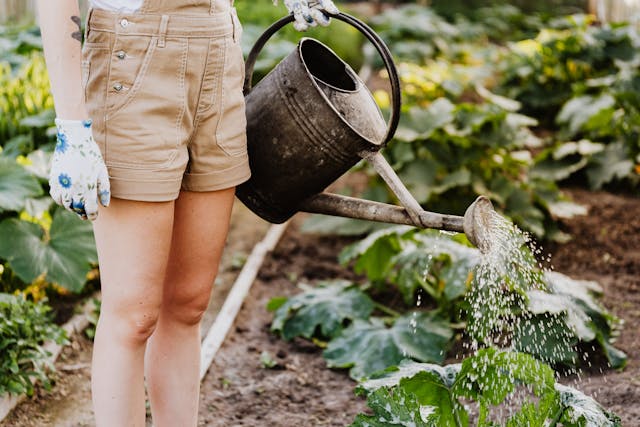Summer in the southern hemisphere arrives fast, and once a heatwave sets in it is much harder to rescue stressed plants. Use this short, practical checklist to prep your beds, pots and lawn now so they cope better with hot, dry spells.
1) Lay fresh mulch where soil shows
Top up any exposed patches with a 5 to 7.5 centimetre layer of organic mulch such as shredded bark, composted leaves or straw. Mulch slows evaporation, buffers soil temperature and suppresses weeds, so plants ride out heat with far less stress.
2) Switch to deep, early-morning watering
Water at the base of plants in the morning so leaves dry quickly and less moisture is lost to midday heat. Aim for slow, deep soaks rather than frequent light sprinkles, which only wet the surface and encourage shallow roots.
3) Check irrigation before the first scorchers
Walk your drip or micro-spray lines, clear clogged emitters and repair leaks. If you use a sprinkler, run shorter cycles with rests in between so water can infiltrate instead of running off. Both drip and cycle-and-soak methods push moisture deeper to the roots and make every litre count.
4) Create temporary shade for exposed spots
Keep a length of shade netting or a spare garden umbrella handy. Put up temporary shade during the fiercest afternoons, especially for young transplants, leafy greens and potted plants. Lightweight 30 percent shade net is a useful all-rounder for veg in extreme heat.
5) Move and group containers
Shift pots off blazing paving into bright shade or filtered sun, then cluster them to raise local humidity and slow drying. Containers heat up and lose water faster than beds, so expect to water more often during hot spells.
6) Feed lightly, or pause feeding during a heatwave
Plants under heat stress slow down. Heavy fertilising when roots are hot and soil is dry can scorch them. Keep nutrients modest and always water in well. Skip feeding during peak heat until conditions ease.
7) Stake, tie in and deadhead now
Secure tall stems, tomatoes and climbers before hot, dry winds arrive. Snip off spent flowers on bedding and perennials to divert energy to new growth once the heat passes. Good support and tidy tops reduce breakage and moisture loss.
8) Audit the lawn settings
Raise your mower height for summer. Slightly taller grass shades its own roots and conserves soil moisture, which helps both cool-season and warm-season lawns during hot weather. Water lawns in the morning and soak deeply rather than little and often.
9) Top up water storage and kit
Clean gutters, place a water butt where it will fill quickly and keep watering cans ready for any restrictions. A simple soil probe or even your finger is still the best guide to when to water.
10) Walk the garden at dusk
Evening walk-throughs help you spot early stress signs such as wilting that does not recover overnight, leaf scorch or pests that thrive in hot, dry weather. Adjust watering, add shade or trim lightly before problems escalate.
Regional timing tip
In much of South Africa and neighbouring regions, make these changes in late October through November so beds and containers are ready before the first sustained heat spikes. Then maintain mulch depth and morning watering through the hottest months.
Bottom line: prepare now with mulch, morning deep watering, shade on standby and a quick equipment check. A single weekend of set-up can save you weeks of rescue watering when the mercury climbs.
ALSO SEE:
Grow garlic in pots: a simple guide for balconies, patios and small spaces
Featured Image: Pexels

